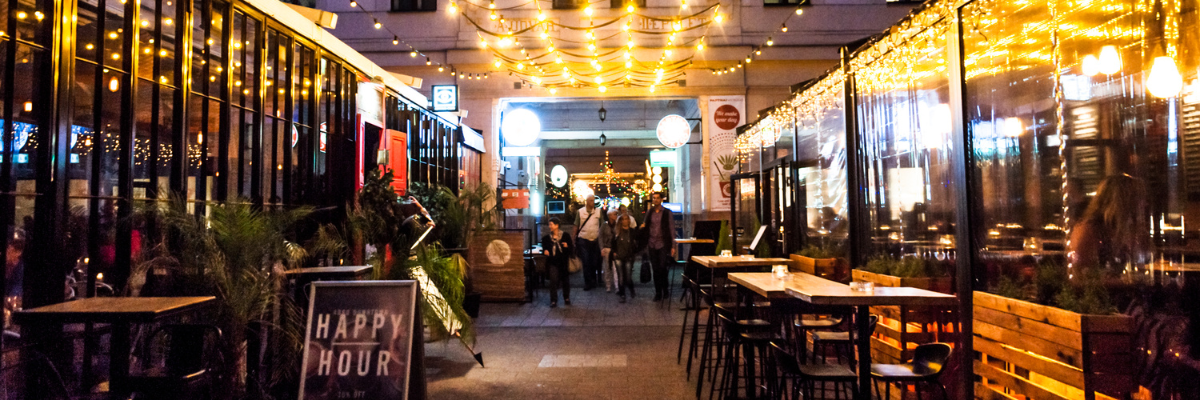Premises Protection

To keep your staff, patrons and community safe, you need to ensure your physical environment is protected. We look at the importance of premises protection and ways to improve your physical security, focusing on trespasser prevention, outside areas, access control and video surveillance.
Trespassing Prevention
Trespassing, the act of entering privately owned land or property without permission, does not only refer to criminals breaking into a building under the cover of darkness. Trespassing can happen at any time, whether your venue is open or closed, and can be committed by opportunistic criminals, barred individuals returning to the premises and customers entering private and staff-only areas.
To reduce the likelihood of trespassers on your premises, your venue needs good boundary security, which:
- Clearly defines private and public spaces
- Provides safety for employers and employees
- Restricts casual intrusion by trespassers
- Reduces the likelihood of intrusion onto your premises by criminals
- Defends the integrity of premises where customers have passed through a controlled security access or payment point
- Reduces the opportunity for theft
Outside Spaces
Effective management of any outside area under your control will help to minimise incidents of disorder, crime and anti-social behaviour, as well as contributing to demonstrating due diligence.
To minimise the number of incidents in your outside space, it is recommended that some or all of the following measures are taken:
- Barriers in place separating patrons from passers-by
- The area is covered by CCTV
- Staff are present and visible in the area (glass collectors, bar staff, etc)
- Security Industry Authority (SIA) licensed staff are present in the area (if the area is large, consider elevating their viewing points)
- The area is well-lit
- All furniture is secured, or the area contains no furniture.
A good lighting scheme is one that has been designed to be energy efficient, distributing an appropriate amount of light uniformly, whilst minimising light pollution. The objective of security lighting is to deter criminals by providing an environment that will deny them the opportunity of the cover of darkness and maximise the potential for them to be observed. The emphasis should be on providing uniform lighting in line with British Standard 5489-1:2020.
If the outside area does not already have a secure boundary treatment, such as a wall, fence, hedge and/or gate, and is owned and managed by the licensed premises, then consideration should be given to the installation of a secure boundary, taking into account emergency egress. This may require planning permission.
Access control
Electronic access control is commonly used to restrict access into a building, but it can also be used to restrict access to non-public areas including staff rooms, staff toilets, offices and high value alcohol stores. These control panels are usually operated with a code or fob, so it is important for managers to ensure these are only known/held by necessary individuals, and that codes are changed frequently.
Where dedicated security doors need to be incorporated for access control management, a specialist contractor should be consulted. If the lock is changed on a door which has been tested and accredited to specific security standards, it may invalidate the security and warranty.
In the event of an emergency, electronic access control systems fitted to dedicated emergency exit doors should fail-safe open to provide unrestricted exit from the building.
Entry data for access-controlled doors should be logged and stored for a minimum of 31 days.
Video Surveillance
A video surveillance system, often called CCTV, in and around your premises can help to deter vandalism, anti-social behaviour, burglary and trespassing, and can assist with the identification of offenders in the event of a crime being committed.
Video surveillance fits well within the overall framework of security management. If a new system is being installed, or an extension to an existing system is being considered, an independent video surveillance expert should be approached to offer:
- Recommendations for observation and facial recognition/identification
- Areas to be monitored and field of view
- Maintenance of equipment and management of recording
- Subsequent ongoing training for staff
It should be noted, however, that video surveillance is not a universal solution to security problems and should instead form part of an overall security plan. It can help promote the personal safety and reduce vulnerability of your staff and customers and can reduce the fear of crime in a venue. Even the smallest licensed premises will benefit from the installation of a good quality CCTV system, which does not need to be expensive.
Ideally, a video surveillance system will record 24/7 in HD quality (both day and night), to ensure that all incidents are recorded, including those that occur outside trading hours. We recommend that images are stored for a minimum of 31 days.
CCTV cameras that are located too close to loud speakers may suffer from excessive vibration which can cause the feed to become unreliable, affecting the focus at peak times. Locating the camera at least 1m from a loud speaker will minimise any negative affect. If your video surveillance is monitored, ensure personnel are able to communicate efficiently with management and security staff so that incidents can be prevented or resolved quickly.
In summary, protecting your physical premises is part of the process of reducing crime and vulnerability for your business, staff, patrons and the local community. There are a number of cost-effective measures that can be put in place quickly to improve your overall premises protection, advice for which can be found within the Licensing SAVI assessment and resources.
Further information around premises protection and is available within the Licensing SAVI assessment.